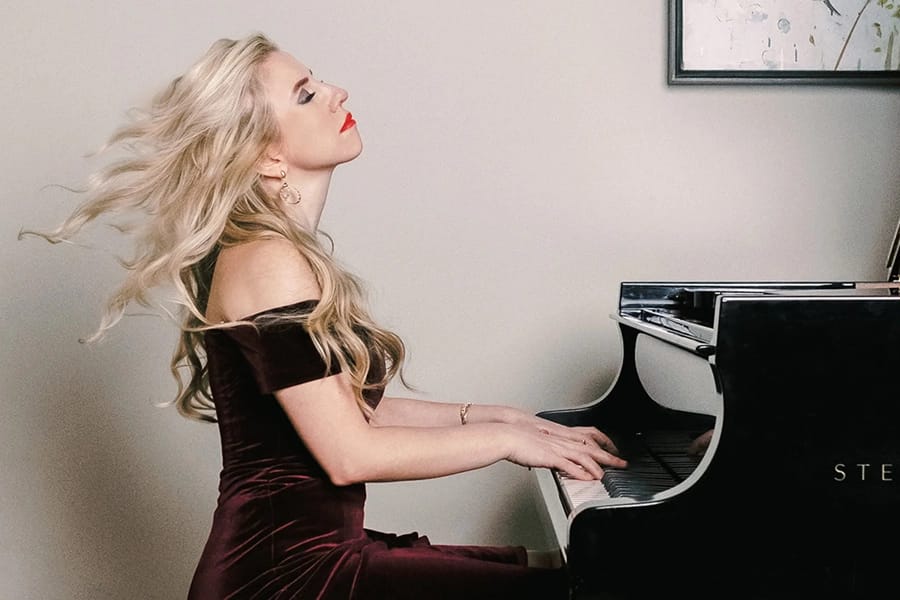
articles / Russian Music
Natasha Paremski’s ‘Pictures’ and ‘Tchaikovsky Variations’

For her latest release on the Steinway & Sons label, pianist Natasha Paremski has included a masterwork she began learning when she was 13, and another that was commissioned for her after becoming a Gilmore Young Artist. Mussorgsky’s Pictures at an Exhibition, and Fred Hersch’s Variations on a Theme by Tchaikovsky both evoke the country where she was born.
There’s more information about the disc at the Steinway & Sons website.
Paremski says her long experience with the Mussorgsky (along with suggestions from concert audiences) that led her to want to make this album. “I hesitate to record things that I don’t know that well, because of course recordings are permanent and concerts are not. So, it was really nice to put down my current stage with the piece… And my current interpretation, (I always say current, because, you know, one hopes these things always evolve) I thought was a pretty good representation of my journey, and I thought this might be a good time to record this.” Many listeners are more familiar with the famous Ravel orchestration than the original version for solo piano, which Paremski says leaves more to the imagination. “Not to put down Ravel’s orchestration, of course, he’s a great orchestrator. But some things I for example don’t really necessarily agree with, like I don’t think that the opening is a trumpet. Being that it’s in ‘nel modo Russico,’ in the Russian style. There probably wouldn’t even be a trumpet. It would be peasants singing in a field. So, the opening promenade I see as a soloist with a choir answering the soloist…” She says one of the advantages is how versatile the piano can be in dynamics and colors – and an individual player can shape tempos in a way a big ensemble can’t. “You can go from next to nothingness in ‘The Dead and The Dead Language,’ to full-on, all the Russian bells, the cacophony of it at the very end… And then furthermore, it is very difficult to take certain liberties with time, and play around with silences. And stretchings of the tempos, and speeding up in certain things like ‘Limoges’, and creating that kind of panicked, unstable environment when you have like 90 people involved. But when it’s just you, you have the autonomy to come to an abrupt halt, and then start again when you feel the moment is right.” The other work, by renowned jazz and classical composer Fred Hersch, who wrote his Variations on a Theme by Tchaikovsky based on the oboe melody in the slow movement of his Fourth Symphony. It was a commission after Paremski was named a Gilmore Young Artist in 2006.






